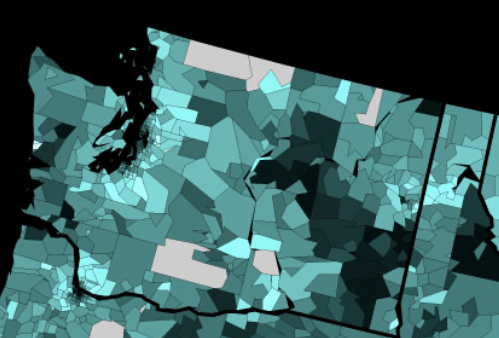Housing Trust Fund: Rural Washington Has Older Housing Units
I’ve been looking at years of Housing Trust Fund (HTF) allocation data and have already pointed out that King County gobbles up a big share of the pie for very expensive construction projects even though rural Washington is relatively poorer and less well off, and has lower vacancy rates for rental housing. Now, after looking at more housing data I found that Washington’s rural counties also have older housing than much of the state. This is yet another reason to reform the HTF to give more resources to rural counties. The key date for looking at aging housing is 1978, the year the Residential Lead-Based Paint Hazard Reduction Act of 1992 mandating reporting of any lead contamination. The disclosure was intended to protect families from exposure to lead from paint, dust, and soil by requiring the disclosure of known information on lead-based paint and lead-based paint hazards before the sale or lease of most housing built before 1978. It doesn’t mean that all housing built before than has an issue, but it is a good indicator.
Let’s take a look.
This chart ranks Washington counties from the highest percentage of housing built before 1980 to the lowest from the United States Census (using the American Fact Finder tool). Rural counties have much more older housing built before 1980. King County has more older housing than the state average of about 50 percent, but all the counties on top of it are rural counties.
When we look at the chart I created earlier looking at the poorest counties by income and wages, here’s how their housing stock looks.
Whitman County is an interesting case since it is the location of Washington State University which accounts for the dominance of rental units. It looks like an error, since rental units exceed owner occupied units and in most of the state rental units represent about 30 to 40 percent of the units. It’s worth looking at that too. This table is ordered by percentage of renter occupied units, highest to lowest.
The housing data in the US Census can become an obsession, at least for me. But what it points to is that while King County does have a lot of renters and its housing stock is older than average, there are lots of rural counties with much older housing and a significant number of renters. Whitman and Kittitas might be dismissed because Pullman and Ellensburg respectively are college towns; but that means college students competing with locals for housing. Whitman County has a lower poverty rate (11.7 percent) than the state average of 12.7 percent, but still much higher than King County’s 6.7 percent.
As for the number of rental units, it’s something I need to dig deeper into. But Grant County, which has higher wages, over $15 per hour and didn’t make my poor county list, has a lot of renters as a percentage, 38.7 percent than the overall state average of 37.6 percent. Being an owner occupying a unit doesn’t necessarily mean wealth or even being above the poverty measure and being a renter doesn’t mean poverty. But in places like Grant County many of the renters are likely working in the agricultural industry.
My point here with this data is that when we look at all units in the state, rural Washington has older housing that is more likely to have lead problems that need to be rehabilitated. It’s also likely that with such old housing, many of these units are less energy efficient and use more energy to keep them warm in the winter and cost more for the occupants to maintain. I also have heard in my travels that there just isn’t very much money to save older housing, so it stays unsafe, occupied by people who make less money and have fewer resources for health care.
Some people in Seattle complain when old houses get knocked down, but while old houses might look nice from the outside they are often inefficient uses of land, allowing fewer people to live in that space and they are often full of hazards and expensive to heat and cool. It’s like your favorite sweater; there comes a point where it has to go no matter how much you love it. In rural parts of the state, Housing Trust Fund money could be used with greater efficiency to save and rehab some of these aging homes to keep families housed and safe.
The featured image is from a 2014 Washington Post Article mapping the oldest (darkest shades) to the newest (lighter shades) by county all over the country. I took a screen shot of Washington’s data.



